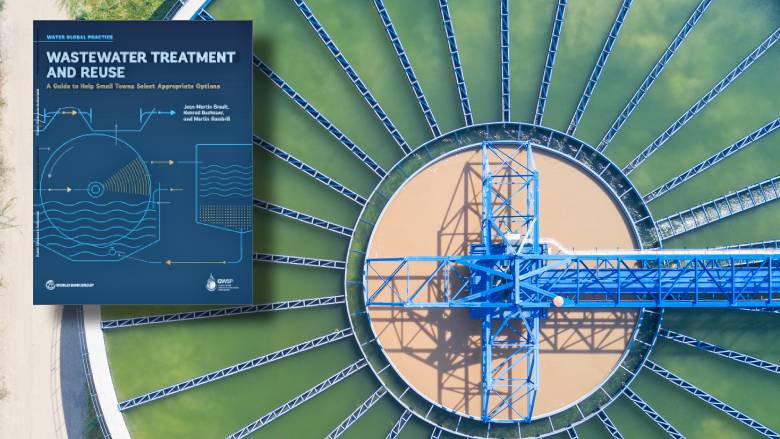Effective Waste Water Treatment Systems: Key Methods and Benefits
Effective Waste Water Treatment Systems: Key Methods and Benefits
Blog Article
Strategic Approaches to Boost Waste Water Therapy Efficiency and Decrease Environmental Effect
In the world of waste water therapy, the quest for enhanced efficiency and reduced ecological influence is a perpetual obstacle that demands strategic services. As society faces the crucial to manage water sources sustainably, a nuanced technique comes to be important. The integration of innovative treatment modern technologies, energy-efficient processes, source healing strategies, improved nutrient removal methods, and clever surveillance and control systems stands for a diverse structure for attending to these pushing issues. However, what lies at the core of this complicated internet of techniques is the possible to revolutionize the means we come close to waste water treatment, not just as a procedure of disposal, but as a valuable possibility for development and environmental stewardship.
Advanced Treatment Technologies
Advanced membrane purification systems have changed sophisticated wastewater treatment procedures, considerably boosting the removal of impurities. This technology has actually shown to be extremely effective in eliminating a vast array of contaminants, consisting of pharmaceuticals, heavy metals, and natural substances, which are commonly testing to eliminate with conventional treatment approaches.
Furthermore, membrane layer filtration systems provide numerous advantages over conventional treatment techniques. Furthermore, these systems are highly functional and can be easily incorporated into existing treatment plants or used as standalone units for decentralized applications.
Energy-Efficient Procedures
The integration of energy-efficient procedures in wastewater treatment systems is critical for enhancing source use and minimizing functional costs. By applying energy-efficient innovations, therapy plants can dramatically lower their carbon footprint and general ecological influence. One essential strategy to boosting power efficiency in wastewater treatment is the usage of advanced aeration systems, such as great bubble diffusers or surface area aerators, which can enhance oxygen transfer efficiency and decrease power consumption. Additionally, including power recuperation systems, like anaerobic food digestion for biogas manufacturing or making use of excess warm for thermal procedures, can help balance out energy needs and promote sustainability.
Furthermore, enhancing procedure control and automation with the use of sophisticated sensing units and monitoring systems can boost overall power performance by adjusting procedures in real-time based upon actual need and conditions. Carrying out energy audits and routinely checking energy efficiency indications are important practices to identify areas for enhancement and track energy-saving initiatives efficiently. Overall, the adoption of energy-efficient procedures in wastewater treatment not just profits the atmosphere but also contributes to long-lasting cost financial savings and functional sustainability.
Source Healing Approaches
With a focus on maximizing source application and sustainability in wastewater treatment systems, the implementation of resource healing approaches becomes a critical facet in boosting functional efficiency. Source recovery strategies in wastewater therapy entail the recognition and removal of beneficial resources from the waste stream, thereby transforming what was when taken into consideration waste right into an important property. By executing source recovery strategies such as nutrient removal and healing, power generation from natural matter, and the production of multiple-use water, wastewater treatment plants can decrease ecological influence while optimizing performance.

Boosted Nutrient Elimination Strategies
Executing innovative nutrient elimination methods is crucial for enhancing the efficiency of wastewater treatment systems. Enhanced nutrient elimination plays an important function in decreasing the ecological effect of treated effluent discharged right into water bodies. Among the key techniques used for boosted nutrient elimination is the process of organic nutrient elimination (BNR), which includes the elimination of nitrogen and phosphorus through organic procedures. This can be achieved with using specialized microbes that can transform nitrogen compounds right into inert nitrogen gas via denitrification, and collect phosphorus within their cells through a procedure called boosted biological phosphorus elimination (EBPR)

Along with BNR, progressed treatment approaches such as membrane layer bioreactors (MBRs) and created marshes can likewise be utilized to enhance nutrient elimination performance. MBRs utilize membrane layers to accomplish top notch effluent requirements by properly removing nutrients and suspended solids. Created wetlands simulate all-natural wetland processes to get rid of nutrients via plant uptake, microbial activity, and sedimentation. By incorporating these sophisticated nutrient elimination techniques right into wastewater therapy markets, communities and systems can successfully decrease nutrient pollution and secure the atmosphere.
Smart Surveillance and Control Solution
Utilizing cutting-edge modern technology, the combination of clever tracking and control systems changes the operational effectiveness of wastewater therapy facilities. These systems include advanced sensors and information analytics to continuously keep track of key criteria such as pH levels, turbidity, liquified oxygen, and flow prices in real-time. By collecting and assessing this data, drivers can obtain beneficial understandings right into the efficiency of the treatment processes, making it possible for positive modifications to optimize therapy efficiency.
Smart tracking and control systems also support remote tracking capacities, enabling operators to gain access to real-time information and control functions from off-site locations. This Recommended Site remote ease of access enhances functional adaptability and responsiveness, making it possible for quick interventions in case of system breakdowns or fluctuations in influent high quality. The anticipating upkeep abilities of these systems assist protect against devices failures and reduce downtime, inevitably improving the general reliability of wastewater therapy operations.
Verdict
Finally, critical methods such as advanced treatment modern technologies, energy-efficient procedures, resource recovery approaches, boosted nutrient elimination methods, and smart tracking and control systems play an important function in enhancing wastewater therapy performance and minimizing environmental impact. By carrying out these techniques, wastewater treatment plants can boost their general efficiency, lower energy consumption, recover useful sources, and ensure conformity with ecological guidelines. These strategies are crucial for sustainable and effective wastewater administration practices.
In conclusion, strategic strategies such as sophisticated treatment modern technologies, energy-efficient procedures, resource recuperation strategies, enhanced nutrient elimination techniques, and smart tracking and control systems find out here play a vital function in boosting wastewater therapy effectiveness and reducing ecological influence.
Report this page